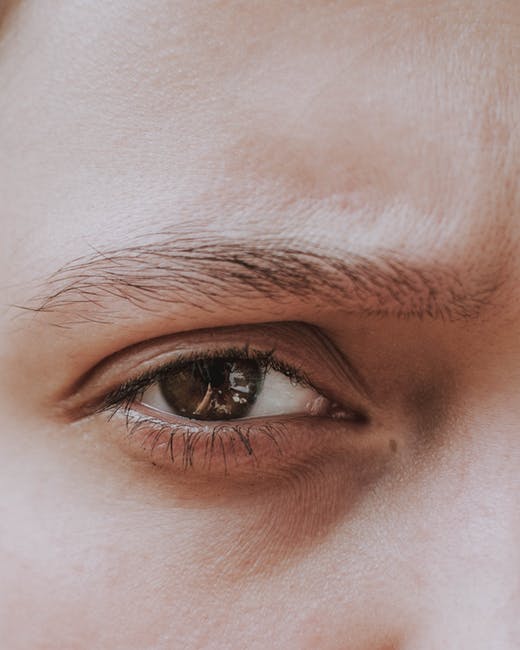
In the United States, more than 150 million people use either glasses or contact lenses to help correct poor eyesight! It’s good news for the industries that manufacture frames, lenses, and sundry accessories like cleaning solutions and lens wipes.
Unless you absolutely love hunting for your glasses when you need to read a label, or you enjoy the contact lens cleaning routine, that tidbit of information might not excite you. Instead, you’re interested in figuring out why you can’t see well, and what alternatives you have to those clunky eyeglasses, right?
In today’s post, you’ll learn what causes bad eyesight. Before you blame it on your genes, take a minute and read our guide to eye degeneration.
Hint: It runs in families but heredity isn’t the only reason you can’t see well without correction.
Blurred Vision and Refractive Error
Myopia, hyperopia, and presbyopia are all common conditions, or errors, that cause blurred vision. Let’s look at each one of these refractive errors more closely.
Myopia
If you can see things clearly when they’re up close but they appear blurry in the distance, you likely have a condition called myopia. Most people just say they’re nearsighted because, really, who can remember a word like myopia?
Hyperopia
The opposite of myopia, people with this condition often see things in the distance clearly. When objects, especially reading material are up close, things get blurry.
Presbyopia
The bane of many adults 40 and older, presbyopia makes reading small print nearly impossible (without vision correction). Many people don’t get a professional diagnosis for this condition. Instead, they buy non-prescription reading glasses from drug or discount stores over the counter.
Ever heard of astigmatism? It’s another cause of blurred vision. Blame the shape of the cornea for any astigmatism in your eye.
Age and Eye Degeneration
For some people, aging causes minor changes in vision while other people experience significant vision loss. The most common age-related cause of poor eye sight is Age-related Macular Degeneration (AMD).
Affecting the macula, this disease impacts a person’s central vision. Central vision helps you see fine detail. It’s needed when you read or drive a car.
While this isn’t a correctable disorder, your eye doctor can treat it during the early stages. Treatment only delays vision loss, however, and may stop disease progression but as of today, there’s no cure for AMD.
The problem with AMD is most people don’t notice vision loss during the early and intermediate stages. Unless you schedule regular eye exams, you may not know you have AMD until you’re already in a later stage of the disease and dealing with poor vision.
Damage to the Optic Nerve
Like every other nerve in your body, the optic nerve sends impulses to your brain. It’s located at the back of your eye and sends messages from the retina to your brain. Damage to this nerve can cause poor vision.
Glaucoma is one cause of optic nerve damage.
Like AMD, glaucoma often “sneaks up” on a person. You can have glaucoma for a long time before you even have a hint of vision loss. If discovered early enough, you can slow vision loss, and in some cases, stop it altogether.
Glaucoma is one eye disorder you can attribute to your genes. African Americans, Mexican Americans, and people with a family history of the condition are more likely to experience glaucoma.
As with other eye conditions, ensuring you schedule routine eye exams may help save your vision. Your eye surgeon may suggest surgery as part of your treatment program for glaucoma.
Cloudy Vision and Cataracts
If you’re not an older adult, you might feel tempted to bypass any talk about cataracts. That’s because it’s a problem typically associated with age.
While eye doctors find them more often in adult patients, young adults and even children can develop cataracts.
Cataracts affect the eye’s lens, causing cloudy vision. If you notice poor eyesight at night when you drive, you could have cataracts. The glare from the bright lights of oncoming cars is especially irritating to drivers suffering from this disorder.
While you can’t completely prevent cataracts, there are certain risk factors and behaviors you may have control over.
Excessive alcohol use and smoking may impact your likelihood of developing cataracts. If you spend hours in the sun without eye protection, you may also increase your risk. You can’t control age or the development of diabetes—two other common risk factors.
The good news about cataracts? Your eye doctor can not only treat cataracts but help you avoid them completely with surgery.
Diabetes and Poor Vision
If you’re diabetic and you’re dealing with blurry vision, spots (floaters) or problems with night vision, you may have diabetic retinopathy. Caused by damage to the blood vessels in the retina, diabetic retinopathy directly contributes to weakening eyesight.
Like many of the eye conditions and diseases already discussed in this article, diabetic retinopathy may not cause symptoms early on. Many diabetics only experience mild vision issues at first, but over time, it can result in total blindness.
All diabetics, both type I and II, are at risk for this condition, which is why your primary care doctor insists you have a full eye exam every year.
Your eye doctor can use a variety of methods to treat diabetic retinopathy, including medications and laser treatments.
Ready for Treatment of Poor Eyesight?
Whether you have poor eyesight due to one of the refractive errors, macular degeneration, glaucoma, cataracts, or diabetic retinopathy, you don’t want to spend the rest of your life battling vision problems. Your eye doctor can treat, and in some cases, prevent further vision loss caused by these eye conditions.
Book a consultation with us today and let’s talk about what solutions we can offer for your eyesight issues.


